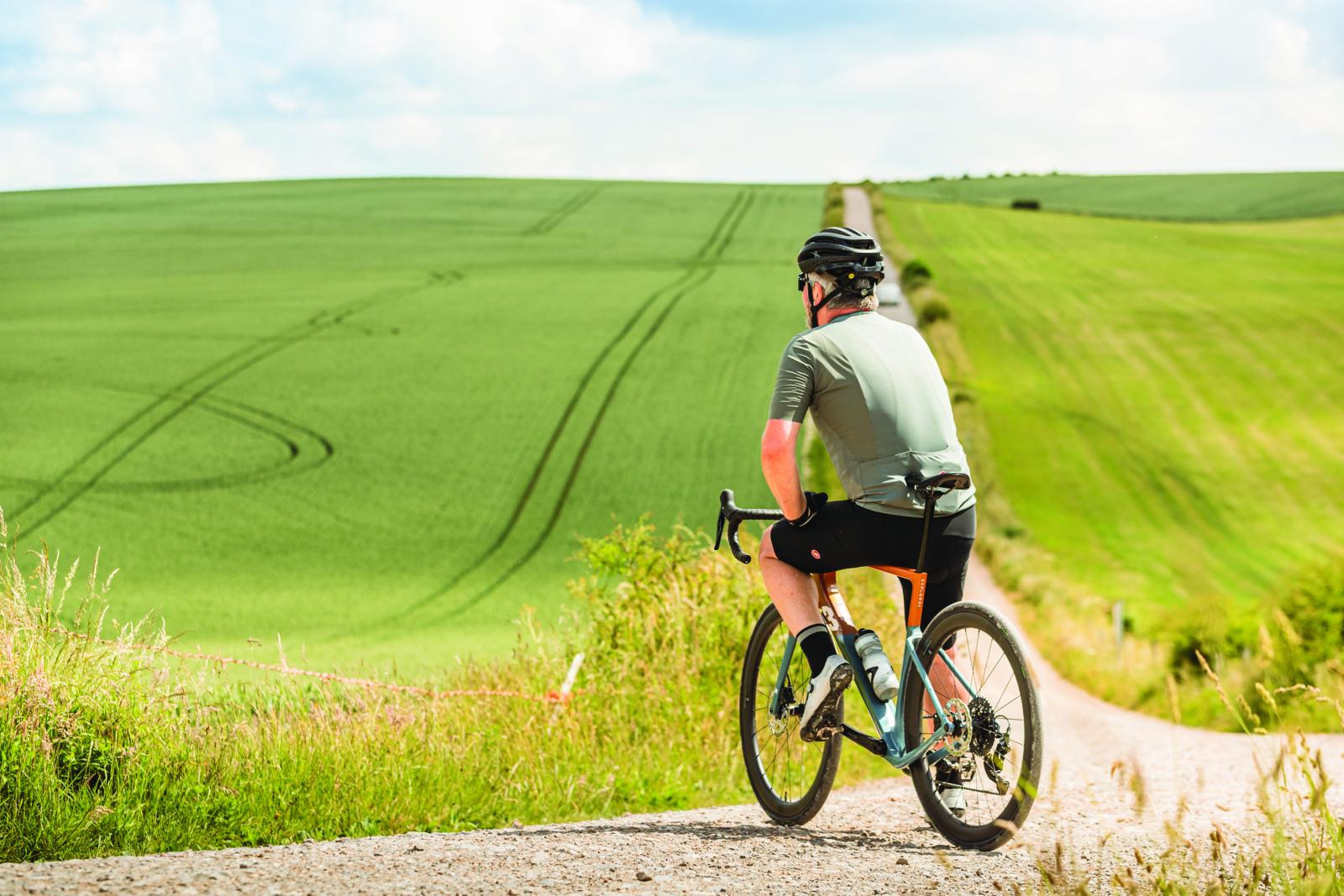Despite the faintly Far Eastern-sounding name, Kuota are in fact an Italian-based bike brand. The original Kharma had a reputation as a smooth riding but powerfully responsive ride ideally suited to longer days in the saddle. This, though, is the Evo – it’s new for 2013, and while it’s outwardly similar to the original Kharma plenty has gone on with the design to bring it bang up to date.
Frame & equipment: Solid frame with a wealth of custom spec options
Up front, the tapered, 1 1/8in to 1 1/2in steerer is enveloped in a huge head and main tube junction. It’s more than 4in deep, making for a front end that feels so absolutely planted we reckon nothing short of a mortar attack could knock it off line.
This flows into a huge, oversized down tube and a massive bottom bracket shell, but one that runs a standard threaded BB. The top tube gently arcs up before dropping to meet the aero-profiled seat tube and dedicated seatpost. Aero seatstays and deep, outswept chainstays create a seriously solid rear end.
The shaping is very much aero optimised. This combined with the slightly steeper than normal 73.5-degree seat angle and 72.5-degree head angle means that, despite a head tube that’s slightly taller than Kuota’s out-and-out pro bikes, the Evo is still aimed squarely at riders who race. Yes, you could do the occasional sportive aboard it, especially with the 50/34, 12-25T SRAM Rival gear setup.
That brings us to the spec. Kuota do offer off-the-peg spec packages, but at the heart of the brand are custom options. A professional fitting is included with every bike and myriad finish and componentry options can be had, even down to having your name on the top tube.
We opted for SRAM’s Rival group for the heart of the bike; strangely, it’s become the forgotten level in SRAM’s lineup, losing out to climber’s friend Apex, slick Force and superlight Red.
But Rival has plenty of positives. The carbon bladed DoubleTap shifters are reach adjustable, the rear mech is slick and snappy to shift, and it compares very favourably with the competition in the weight stakes. It’s combined with a Kuota K02 chainset here.
Braking is handled by another Kuota-branded setup, called EBP but actually a set of TRP R570s, which are solid, and offer bags of power and plenty of feel with only a slightly waxy pad that takes a fair amount of scrubbing before they start to work as you’d want.
Deda’s RHM 02 bar is a compact drop design that offers a nicely balanced position in the drops. Combined with Kuota’s thick padded bar tape, the oversized top section makes for a comfortable selection of hand positions. The matching Deda Quattro stem’s oversized, squared-off design adds a touch of class and a huge amount of stiffness.
Mavic’s Aksium wheel/Aksion tyre combo is a perfectly decent package, though we could induce a little brake rub from the rear when sprinting out of the saddle. A post-ride check confirmed a loose spoke or two, but a quick tighten easily cured that niggle.
Rounding off the bike is a classic San Marco Concor saddle. Its slim proportions and comfortable, rounded shape perfectly matched the Kharma, and when a bike comes with a saddle from a trusted brand it’s always a bonus.
Ride & handling: A racing dream depending on road conditions
Riding the Kuota is a fun and frantic exercise. It’s just so incredibly solid under power. The tight front end is rock solid and the steering geometry makes it suitably rapid to respond to quick direction changes.
It’s these wonderful characteristics that highlight the flaws. On smooth, well-maintained roads the Kharma is an absolute dream. And because it hails from Italy, where the roads are generally smoother than our underfunded, scar-filled lanes, we can see just how a bike with this character could evolve. Sadly, though, on our favourite test loop descents the Kharma skipped and flitted over coarse surfaces, never feeling fully connected to the road.
It’s not a harsh bike to ride and it served us well over longer distances, never becoming wearing to keep on pushing, but the concentration levels required to eke the best out of it mean it wouldn’t be our first choice unless we were heading out to warmer climes with better roads.
If you have aspirations to compete in a triathlon or the occasional time trial, the Kuota could well be worth considering for its aero styling and steeper geometry. It would make a fine partner for racing against the clock.
This bike was tested as part of Cycling Plus magazine’s 2013 Bike Of The Year feature – read the full results in issue 273, on sale Friday 1 March and available on Apple Newsstand and Zinio.
